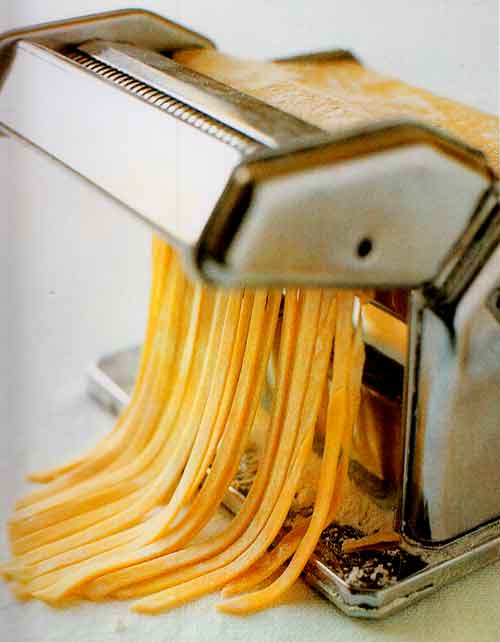How to cook fresh pasta

Fresh pasta needs less water than dried pasta. To cook fresh pasta, have a large saucepan of rapidly boiling water ready. Make sure you have enough boiling water for the pasta to cook in. Add a little oil to the water, so the pasta doesn’t stick together. Add pasta to pan, ensure the water stays boiling and stir slowly for 10 seconds to separate the pasta. Boil pasta for 2-4 minutes (time depends on the type of pasta you are using) or until it is al dente.
Drying fresh pasta

To dry fresh pasta, hang it over a suspended wooden spoon or a clean broom handle in a dry, airy place for 1-2 hours (time depends on the weather). Leave it hanging until it’s dry and hard. Store pasta in airtight containers. Alternatively, fresh pasta can be frozen in airtight plastic bags containers for up to 6 months.
How to cook dried pasta

The most common mistake when cooking dried pasta is not having enough boiling water. Have a large saucepan of rapidly boiling water ready. Add a little oil and the pasta to the pan, and stir for 20 seconds to separate the pasta. Boil for 10-14 minutes. (Cooking time varies depending on the shape of pasta as well as the type of the flours used in the pasta.) Cook pasta until it is al dente.
How to drain cooked pasta
To drain cooked pasta, pour it into a colander and shake colander to remove excess water. If you are serving it hot, use pasta immediately and do not rinse it. If you are serving it cold, rinse pasta under warm and then cold water. You can also refrigerate pasta and use it within 3 days.
What is the meaning of al dente
Al dente means ‘to the tooth’. When it’s cooked, pasta should be soft but still firm when you bite into it. The easiest way to tell whether pasta is al dente is to remove a piece from the saucepan and test it between your teeth. The pasta should have some texture when you bite into it, but it should not be dry and hard in the middle.

